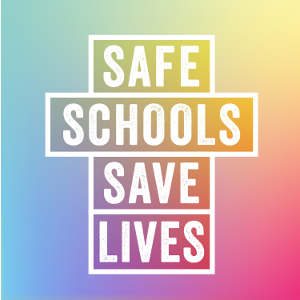The California Student Safety and Violence Prevention Act
The California Student Safety and Violence Prevention Act of 2000 prohibits discrimination and harassment on the basis of sexual orientation or gender identity in California public schools. The law, authored as AB 537 by then-Assemblymember Sheila Kuehl and signed into law by Governor Gray Davis, amended the state Education Code by adding actual or perceived sexual orientation and gender identity to existing sections on discrimination.
Check out the law for yourself:
Full text of the California Student Safety and Violence Prevention Act of 2000.
Questions? Check out these two legal Q&A guides:
Legal Question and Answer Guide for School Administrators
What are school district’s legal responsibilities under state and federal anti-discrimination laws?
Under state law, public schools and non-religious private schools that receive state funding,
have a legal duty to protect students from discrimination and harassment on the basis of
actual and perceived sexual orientation or gender identity, or on the basis of association with
a person with one or more of these actual or perceived characteristics. Student Safety and
Violence Prevention Act of 2000 (AB 537); California Education Code §§ 200-220. The
Department of Education regulations implementing this law state that:
[N]o person…shall be subjected to discrimination, or any form of illegal bias, including
harassment. No person shall be excluded from participation in or denied the benefits of
any [school] program or activity on the basis of sex, sexual orientation, gender, ethnic
group identification, race, ancestry, national origin, religion, color, or mental or physical
disability. Title 5, California Code of Regulations, § 4900(a).
The law defines “gender” very broadly:
“Gender” means sex, and includes a person’s gender identity and gender related
appearance and behavior whether or not stereotypically associated with the person’s
assigned sex at birth. Cal. Penal Code § 422.56(c); see also Cal. Educ. Code §§ 200, 220
(cross referencing Cal. Penal Code § 422.56).
For more information about AB 537, see http://www.cde.ca.gov/re/lr/sv/index.asp.
All students also have constitutional rights to equal protection under the law, and are
protected under Title IX of the federal Education Amendment Acts of 1972 from sex
discrimination in educational programs that receive federal funds. Schools must protect
lesbian, gay, bisexual, and transgender (LGBT) students and those perceived to be LGBT
from harassment, just as they must protect students from harassment on the basis of race,
religion, sex, and other characteristics. Schools cannot ignore harassment on the basis that
LGBT students should expect to be harassed, or have brought the harassment upon
themselves by being open about their sexual orientation or gender identity.
Also, students have constitutional rights to freedom of expression, including the right to be
open about their sexual orientation and gender identity.
What are some examples of discrimination and harassment based on sexual orientation or gender identity?
Examples of unlawful discrimination include: refusing to allow a same-sex couple to attend
the school prom; treating displays of affection by same-sex couples differently than displays
of affection by different-sex couples; and refusing to allow a student to wear clothing that is
consistent with the student’s gender identity.
Examples of harassment include name-calling, threats or violence based on a student’s actual
or perceived sexual orientation or gender identity.
Click here to read the full Legal Question and Answer Guide for School Administrators.
Question and Answer Guide to California’s Parental Opt-Out Laws
Why was this question and answer guide developed?
Public school administrators, board members, and teachers in California may face the difficult
task of balancing their responsibilities to make decisions about the content of curricular and
other school activities, against parents’ desire to control the content of their children’s
instruction, and/or “opt out” of controversial aspects of the curriculum.
California’s education laws are complex, and both parents and school administrators are
sometimes misled by false claims about “parental rights.” Specifically, some advocacy groups
have inaccurately claimed that California public schools may not implement diversity or
tolerance curricula without parental permission.
This question and answer guide was developed by the California Safe Schools Coalition to
provide accurate, reliable information on the rights, duties, and options of public schools,
teachers, parents and students under California law
Who determines the curriculum in public schools, under California law?
The California Constitution guarantees each student the right to a free public education. The
state sets a basic outline for public school education through the Education Code and through
administrative frameworks issued by the state Board of Education on various curricular areas
such as health and science. However, schools are governed primarily at the local school
district level. Parents have a constitutional right to choose a private education for their
children. If they elect to send their children to public schools, parents have very limited rights
to prevent their children from receiving the entire range of instruction available in public
schools.
Implementing the law: What the California Department of Education Says
Read the California Department of Education AB 537 Task Force Report, with recommendations for implementing the Student Safety Act.
One of our schools’ most important jobs is to ensure that all students are offered equal protection from potentially violent discrimination and harass- ment, which not only disrupt learning but also can leave lifetime scars. The California Student Safety and Violence Prevention Act of 2000 (Assembly Bill 537) takes an important step in offering that protection.
Before Assembly Bill (AB) 537 was enacted, the California Education Code specifically prohibited discrimination against and harassment of students and staff in schools on the basis of sex, ethnic group identification, race, national origin, religion, color, or mental or physical disability. The new law has added the provision that all students and staff in public education facilities have the same right to a safe learning environment, regardless of their sexual orientation or gender identity.
I convened the AB 537 Advisory Task Force to develop recommendations for schools as they work with their communities to ensure that policies and strategies are in place that fulfill the law ’ s provisions. Successful implementation of the law will help ensure that schools provide a safe, supportive environment for all students.
Despite media attention focused on the tragedies that have occurred in recent years on school campuses, our schools continue to be safe havens for most students. However, any incident that harms a student, or makes him or her feel unsafe, needs to be prevented and addressed. We must continue the important task of fostering and promoting programs that ensure our students ’ safety and enhance the learning environment of our schools. The recommendations in this document contribute to that effort.
I want to thank the members of the task force for all their hard work. I appreciate their time, dedication, and thoughtful contribution as we continue our efforts to promote safe schools throughout California. – Delaine Eastin
Americans want all students and staff in our schools to be safe, supported, and engaged. We want schools to bring out the best in our children and to provide all students equal access to a good education. The concept of equal access has long been a cornerstone of American education, but when students and staff fear for their safety, their equal access to an excellent education is compromised. We know that students and staff cannot be expected to function well when preoccupied with fear in their environment.
Hundreds of laws, policies, regulations, and programs have been established to ensure that schools are, in fact, safe and supportive and that all students have equal access to education. However, we know that students and educators who are or who are perceived to be lesbian, gay, bisexual, or transgender too often face harassment, discrimination, and even violence on a regular basis. Unfortunately, we also know that some school decision makers may be reticent in responding effectively to such instances because of their own fears that their response might be considered too controversial. In such instances equal access to a quality education for all is not being provided. This report ’ s recommendations attempt to ameliorate this situation in California public schools.
Inquiries or Suggestions?
If you have any suggestions or contributions you would like to make, please contact us via our contact form.
Please support the following organizations by visiting their websites:

